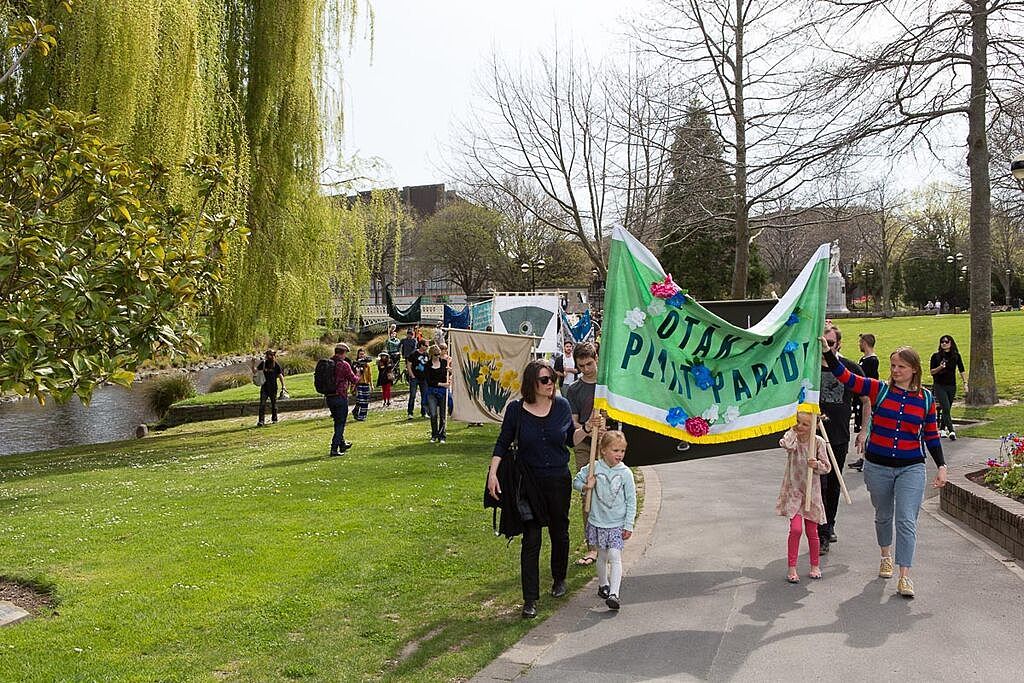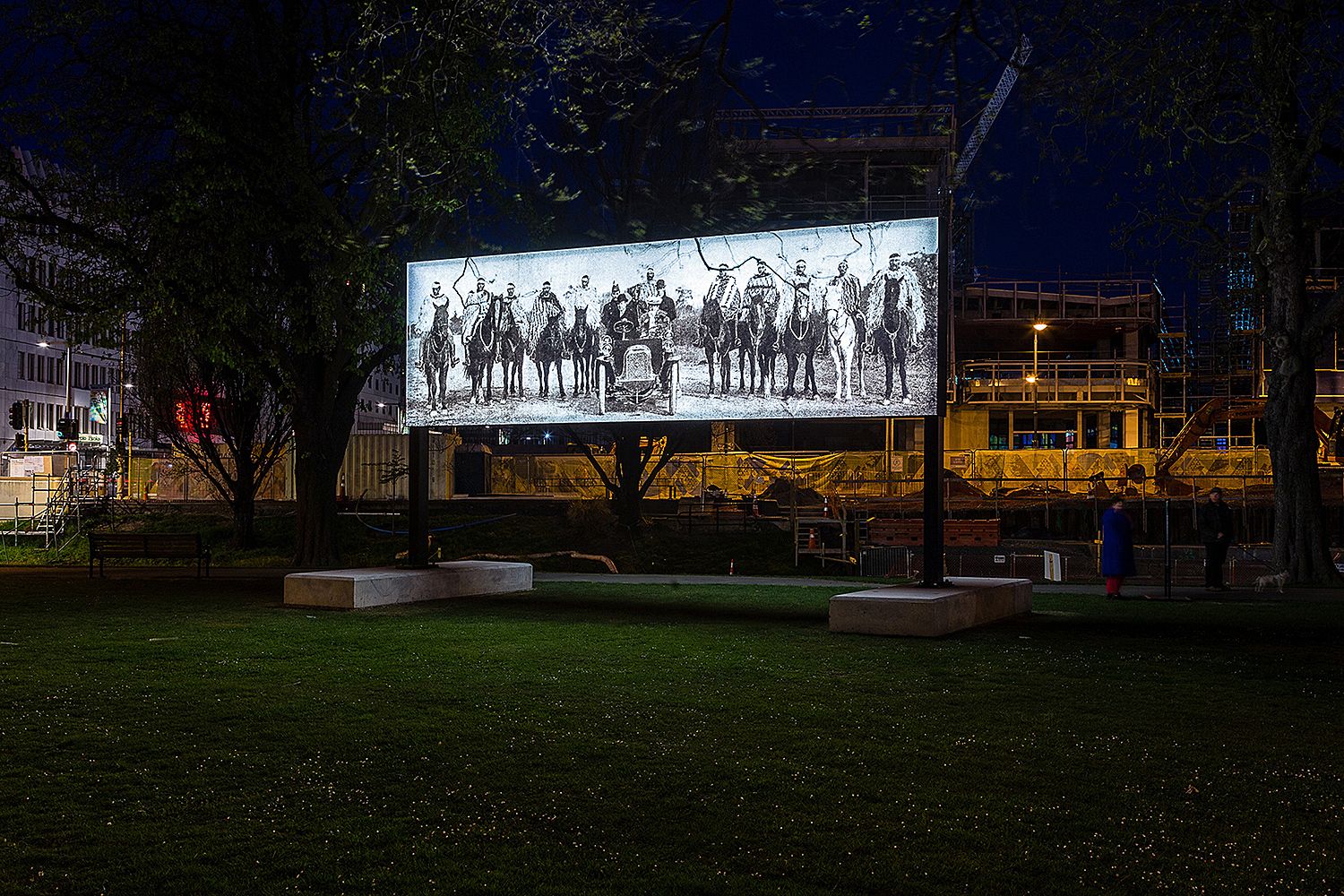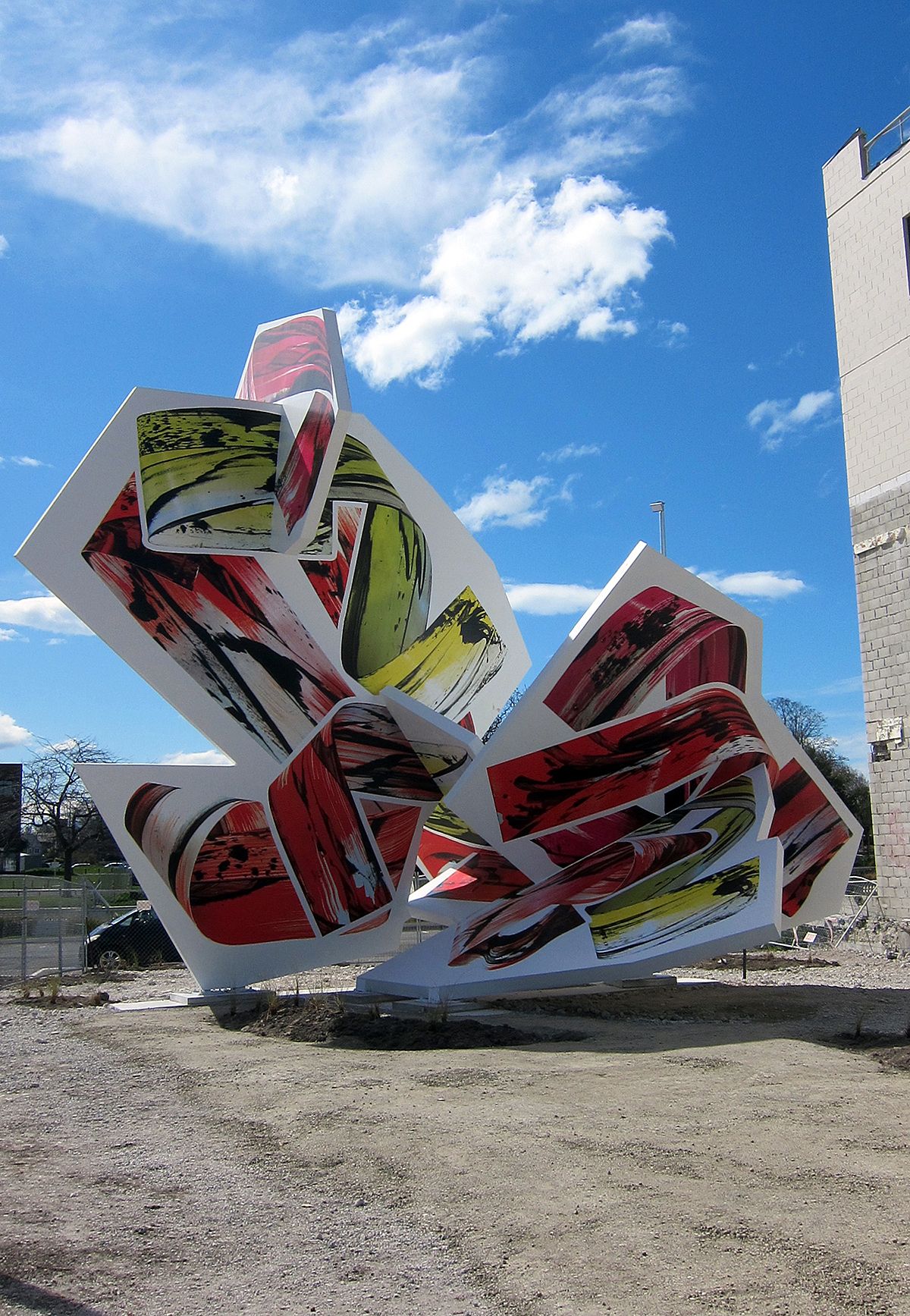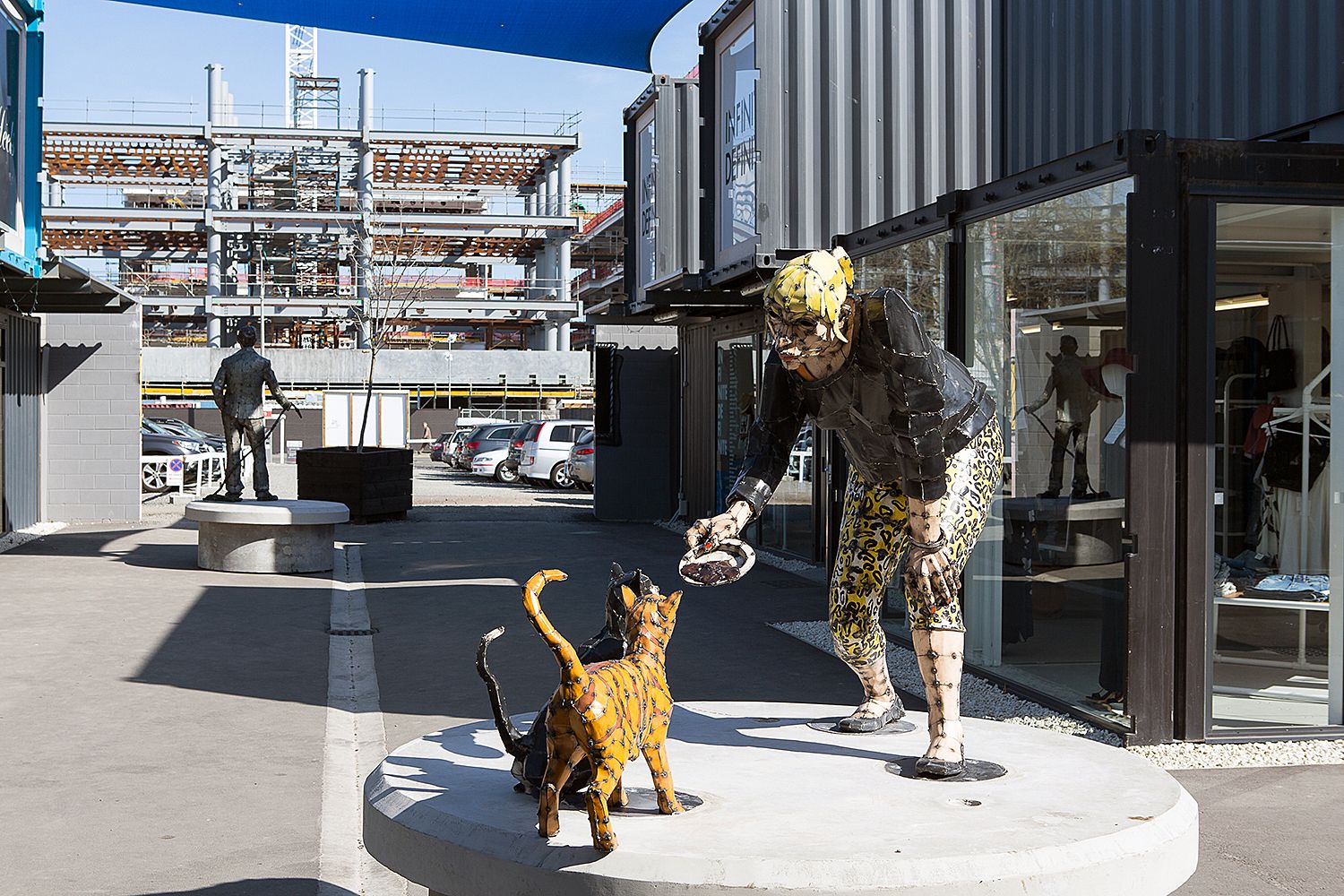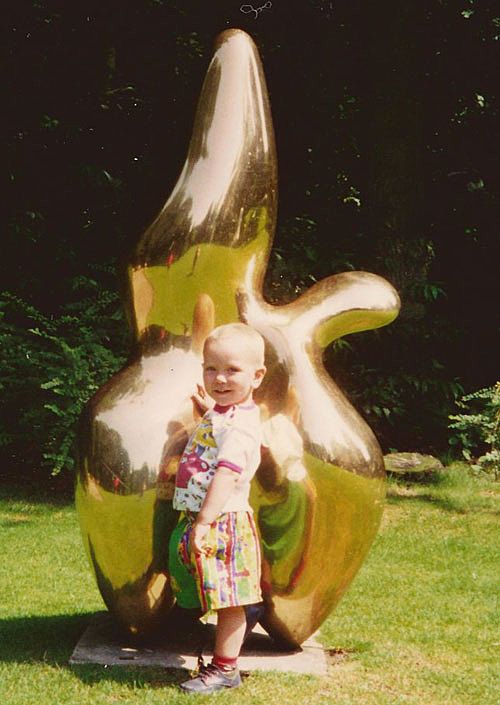Ruining the Fun
On the banks of the Avon, between Mona Vale and the Town Hall, Christchurch’s claim to be a garden city is at its strongest. This stretch of water presents a beautiful aspect, flowing past the lodge at Mona Vale, past the broad swathes of lawn running down from the grand houses of Fendalton, and past the daffodil meadows of Little Hagley Park. It meanders by the expansive municipal fields of Hagley Park, below the handsome Warren and Mahoney additions to the Gothic ensemble of Christ’s College, before looping around to encircle the Botanic Gardens. Punts depart from the Antigua Street boathouse, and willows drape the grassy banks. It flows through the city, passing by the Bridge of Remembrance, the Queen Anne Municipal Chambers and the Sufferance Memorial, edged by manicured swathes and stately trees, before reaching the statues of Cook and Victoria in Victoria Square. Brown trout linger in the shade, and over time it is hoped they will come to laze in the shadow cast by Sir Antony Gormley’s STAY.*
STAY will consist of two parts, two figures. They’re abstracted iron forms, transmutations of the human form into crystalline, patinated cast-iron. One, already installed, is for the Avon upstream of the Gloucester Street bridge. The other is intended for the North Quadrangle of the Arts Centre, the complex of Gothic buildings left behind when the University moved to the Ilam site, and painstakingly restored following the earthquakes. The two forms sit comfortably within Gormley's description of Christchurch as a “garden city in which human life had found its own forms and rituals, distanced and unaffected by the turmoils of a wider world.” As the centrepiece of Scape: New Intimacies, this year’s iteration of New Zealand’s “foremost biennial of art in public space,” STAY will remain after the biennial has finished, a marker of this moment.
Several commentators have claimed that this moment in Christchurch’s history is a particularly friendly one for public art. Charlie Gates talks in the Press about “a quiet public art renaissance", while Warren Feeney writes that, post-quake, “the message has finally got through about the value of the arts to a city that, historically, has frequently been hostile.” Unfortunately, these Panglossian pronouncements are at odds with the evidence from this year’s Scape. New Intimacies is marked by a collection of banal and shallow works, interspersed with a few more daring attempts to spark something more interesting.
Fiona Jack’s Plant Parade seemed to be one of Gormley’s ‘forms and rituals’ as it ambled along the banks of the Avon, heading upstream towards the Hereford Street bridge. Carrying banners carefully fabricated by the artist, this parade sought to bring the social lives of plants into the open. The meandering procession — art people perhaps lacking some of the discipline required to parade in good order — wound its riverside way past the greensward that covers the Pyne Gould Guinness site on a hot, dry Sunday morning, occasionally crossing broad dusty streets. Where the procession crossed the potholed and rippled roadways, a traffic management team carefully stopped the few vehicles passing through the central city while the banners and plants were borne past, before throwing the cones back onto the truck and moving on to the next crossing. There were two teams, leapfrogging each other through the city, until the parade finished near Nathan Pohio’s Raise the anchor, unfurl the sails, set course to the centre of an ever setting sun!
Raise the anchor… works best in the early evening, when the light is fading, the image glows in the deep warm dusk, and the concrete and steel substructure dissolves into darkness. It’s reminiscent of a still from a Western, a comparison first made by the artist and heavily repeated in publicity and media interpretations. In the Press, Pohio compares it to The Magnificent Seven, the 1960 John Sturges adaptation of Akira Kurosawa’s 1954 Seven Samurai. The comparison to the complicated filmic genealogy of the Seven is an apt metaphor for the cross-cultural interactions vividly splayed out across the surface of the image.
The juxtaposition of the horses and their replacement, the motorcar, also seems to be a metaphor for this interface. It’s likely this was an intended reading of the original image, a photograph that ran in the Canterbury Times of 1905 showing a row of horse-mounted, finery-cloaked Ngāi Tūāhuriri rangatira meeting the then Governor-General. But in the context of post-settlement Ngāi Tahu’s self-assertion as an active partner to governments, the connotations of images of the relationship between the Crown and iwi leaders are changing. Pohio takes a photograph from over a century ago that captures a moment in that relationship, and a moment in understandings of it, and re-situates it in a radically different context, opening up space for a consideration of how that relationship could alter in the future.
Pohio’s work engages with the history of the city. But this engagement is not evident in many of the other Scape works, which seem unaware of their position within a contested field of land, space, and culture in a nation characterised by the dispossession and alienation of whenua Māori. This isn’t simply a failing of the artists: some of them, like Jack, are clearly capable of engaging with these issues. Rather, the curatorial direction of what claims to be “New Zealand’s foremost biennial of art in public space” seems to be oblivious to the complexities of New Zealand’s colonial history, and the ways in which a major public arts festival might need to engage with that history deeply and broadly, rather than simply quarantining it within one work.
Peter Atkins’ two-sided billboard Under Construction - Chaos and Order displays a series of panels bearing imagery derived from road signs. It is not clear whether Atkins is aware of the extent to which this kind of hi-vis motif is a cliche in the context of post-quake art. The use of Fulton Hogan as a fabricator does allow a certain irony into the frame, but it’s undercut by the suggestion that the visual shift from “chaos” to “order” between the two sides of the work is a metaphor for the rebuild of the city. Atkins’ formal explorations would be better served without the overlay of worn-out narratives about the rebuild, which at best add nothing, and at worst suggest a painfully touristic and naive understanding of the Christchurch situation.
Similarly, while Judy Millar’s Call Me Snake may be a formal exploration that succeeds on its own terms, it doesn’t move beyond that to any more meaningful or challenging problems. The excessively cute framing of the object by the twin façades of New Regent Street is too obvious, although the decision to leave the back of the work blank means that from the other side of the river Call Me Snake takes on a more oblique and sculptural energy as an interlocking arrangement of constructivist panels.
Hannah Kid’s Kiwiana sculptures exemplifies the drive for “accessibility” at its most obvious. In the Restart Mall on Cashel Street, near the Christchurch institution of Ballantyne’s department store, Kidd has installed a series of figurative sculptures, four visions in corrugated iron. The series is titled Avonside Drive, a well-known street name from the eastern suburbs of Christchurch. The four people depicted are Anglo-Saxon New Zealanders, stereotypes from the 1970s. An elderly man mows the lawn — in walk shorts! A nightie-clad woman peers through the blinds! A suited man holds a drooping hose, looking puzzled! A leopard-print arse feeds the neighbourhood cats! Technically, Kidd is a gimmicky sculptor, too invested in the shallow difficulties of forcing her material to act in unfamiliar ways to resolve any more fundamental problems. She doesn’t seem confident in her ability to use the vocabulary of the human form to convey emotion, and so resorts to easy solutions that lack conviction, like the re-occurrence of the pet motif. The overall effect is one of illusionistic tricks and theatrical props.
The sculptor’s expressed desire to represent “everyday heroes” is reductive of the lived experiences of post-earthquake Cantabrians, turning them into the shallow protagonists of tabloid journalism, and erasing the grey areas that populate the post-disaster world. It seems that in order to make peoples’ experiences “accessible”, they have to be articulated though crudely realist means. Kidd offers no space for the frustrations and complexities of life in a post-disaster environment. Instead, we are reduced to one of the most banal images possible: the everyday hero.
Comparing the ambitious scale, curatorial risk, and breadth of vision of the 2006 and 2008 biennials (under Natasha Conland and Susanne Jaschko, and Danae Mossman and Fulya Erdemci respectively) to the conservative and timid approach of New Intimacies suggests that a new orthodoxy of tepid, easily digestible object-based sculptural practice has been installed. Prior to the earthquakes, Scape commissioned substantial works by young sculptors like Simon Denny, Eve Armstrong, and Dane Mitchell, and backed difficult work like Kah Bee Chow’s Afterlife (V. H). New Intimacies appears to be unable to make similarly bold curatorial decisions, a failure of nerve seemingly driven by the desire of the curator, Rob Garret, for an “accessible” Scape. This underestimates the public’s capacity to engage with daring and innovative practices and the ability of comparatively simple artistic gestures, like Callum Morton’s asteroid-in-a-shopfront or James Oram’s hoist boat above Cramner Square, to both engage a broad audience and sustain ongoing, deep consideration.
Placed next to Kidd’s clunky attempts to depict humanity in metal, STAY looks almost painfully elegant, dappled in shadow, stillness poised on running water. Gormley is a strong sculptor on a purely formal level, and STAY is a skillful articulation of a male form within the western tradition. In the Press, Chris Moore placed Gormley in the context of the Victorian interpretation of this tradition, the lumps of bronze and slabs of marble in Christchurch that commemorate great men (and occasionally, her Majesty). While many of these works might now be seen as ideologically charged and artistically banal memorials to a now-discredited imperial ideology, Moore sees these as a “neglected” collection “all too often taken for granted”. For Moore, Gormley is the heir to that tradition, and I think this is an accurate judgement.
The curatorial direction of what claims to be “New Zealand’s foremost biennial of art in public space” seems to be oblivious to the complexities of New Zealand’s colonial history.
The Avon in which STAY stands is a constructed environment. It’s the result of a colonial ecological imperialism: the erasure of a former ecology and the imposition of a simulacra of an English landscape. Gormley’s seeming lack of curiosity as to how “a town in Surrey” can be “transposed to the Southern Hemisphere” is striking, as is his claim that he wanted a “natural environment” and so chose the Avon, a body of water that is notable for its artificiality. Even the trout that swim in the Avon are imported, descendants of ova laboriously imported by the early colonists in wooden boxes packed with damp mosses, let alone the willows that line the banks, or the banks themselves, built up and drained by the long hard labour to shape the Avon into the form of a English river, not a Canterbury swamp. Perhaps if the artist had visited the site after receiving the commission he would have noticed some of this — or, perhaps, if the curator had suggested he do some research.
As Simon Pugh argues, the end-point of all the artifice in a garden is the hiding of the artifice and the creation of an illusion of nature. It’s exactly this feature of the garden, the way that through the assertion of its own naturalness it both erases that which existed before it, as well as the labour required to create it and sustain it, which allows the garden to function as a space for the propagation of ideology. Gormley slots into the ideology of the garden without any difficulty. His sculpture is an abstracted male nude expressing emotion through posture, a traditional subject for a garden, and, indeed, the placement within a water feature is a traditional choice for such statues, as with the Neptune at Westbury Court. The claim of the male nude to express universal human emotion is a similar ploy to the claim of the English landscape garden to represent nature: an erasure of alternatives, and an erection of a deeply ideological claim about the human experience as neutral fact.
Moore argues that Gormley is “a prime example of the democratisation of the experience of art” and that this explains critical disdain for his practice. This easy accusation of elitism is part of the machinery of ideological camouflage: to challenge Gormley for his naturalisation of the imperial city becomes to exclude democratic participation, to be inaccessible. This both patronises and stereotypes the general public, by assuming they are unable to handle supposedly “complex” art, and that the tastes of the public are somehow homogenous, such that a narrow band of comparatively traditional practice can be assumed to speak to what is in fact a diverse and heterogenous society. But it also abdicates the artist’s right and, sometimes, duty to challenge and critique, to make difficult.
To point out that the garden is artificial is to ruin the fun. But sometimes artists should ruin the fun.

